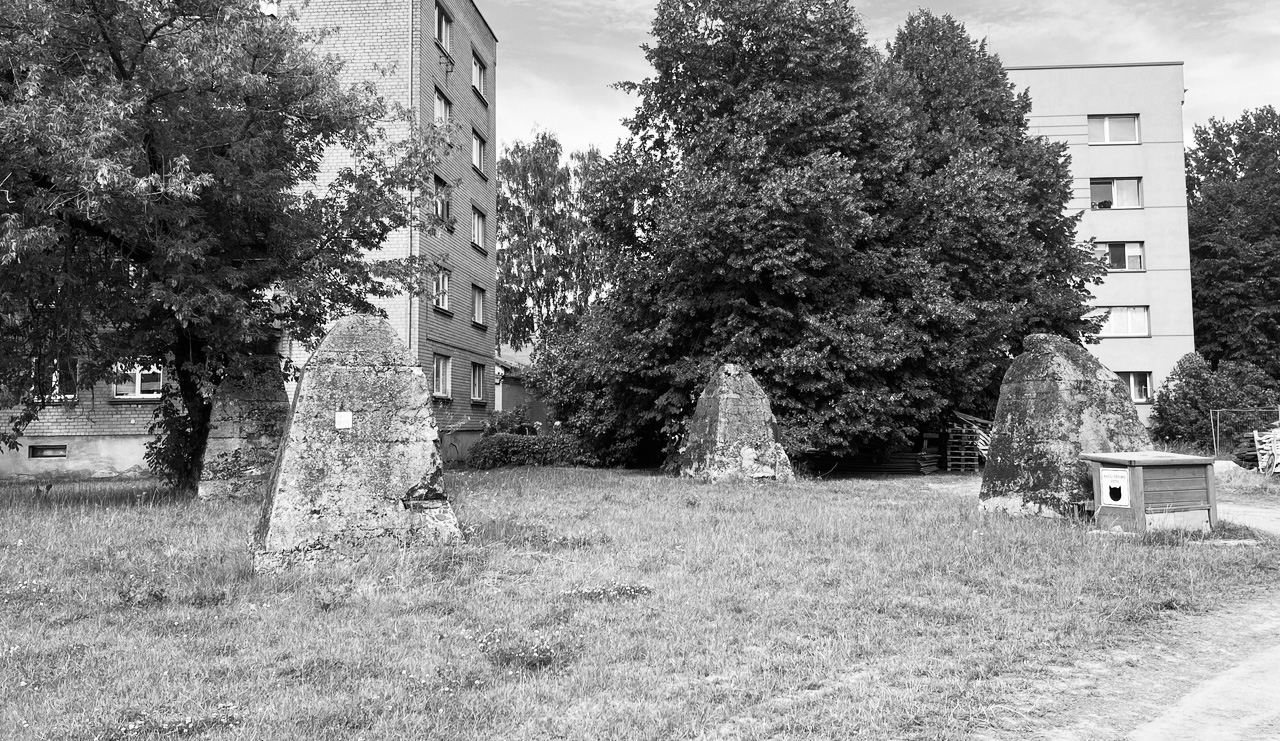Beacon Returned, 2008-2024
found situation
M-7 Švyturio g. 10
It is said that Klaipėda stole the beacons on its coat of arms from Königsberg as early as the 13th century (not the beacons themselves, but only the image of the beacons; it is not known how the copyright worked at that time), because Klaipėda itself did not have the beacons yet. In order to dispel the myth of “theft”, which is not beneficial for Klaipėda and its coat of arms, it was decided to return the image of the beacon (not the beacon itself), which had stood on this spot since 1852, to Königsberg, because if you returned it, it means that you did not steal it, but only borrowed it. Since the beacon is no longer visible here, and the purpose of a beacon is to be visible, its image has already been returned. In acknowledgement for this nice, if somewhat belated, gesture, Königsberg gave Klaipėda two cats, which have taken up residence next to the foundations of the returned tank. This reciprocal action was also a reminder to Klaipėda that it had borrowed two beacons and returned only one. Klaipėda’s excuse could be that it had also returned philosopher Moses Mendelssohn, the grandfather of the composer Felix Mendelssohn (the author of the famous Wedding March), to Königsberg in 1777, by preventing him, a Jew, from taking up residence in Klaipėda.
By telling an urban myth, the artist draws attention to the issues of the construction of the city’s image and citizen participation in it, as well as to the problems of decision making for “decorating” and “cleansing” the city, and the (non)preservation of the historical-cultural heritage.
Paulina Pukytė

300 years. Future artistic attraction (temporary), 2024
object; an inaccurate copy of one element of the ‘Timeline’ in the Danė Square; foam, paint, 50 x 50 x 500 cm (horizontal);
distances measured and the future calculated by Juozas Laivys and Paulina Pukytė, copy made by Juozas Laivys
M-3 Disused power plant, Danės g. 8, in front of Building M
The sculptural-architectural ” Timeline of Klaipėda’s history” in the Danė square (there is disagreement about who is the author, as it is not clear what is more important – the idea, the project or the implementation), commemorating the centenary of Lithuania, shows 55 years and approximately 75 metres (ratio 0.733) between the Soviet period and the restoration of Independence. The distance from Independence to this place is approximately 410 metres, so if history were to wave in a straight line and the same ratio of years to metres were applied, it would be 300 years since the restoration of Independence right here. This “acceptable”, “unpretentious” object, black but optimistic, seen before but given as a gift, linked to the history and image of the city, based on the relationship between distance and time, and predicting the future – will not last, because, although it is enduring, it is temporary.
The work raises questions relevant to urban culture, such as the problems associated with public space “decoration” and commemoration solutions, the value of artistic ideas, and the ways in which the so-called “urban accents” (public decorative art) appear in the city.
Sofija Baldauskaitė is an unknown artist

Organiser: Klaipėda Culture Communication Centre.
Funded by the Lithuanian Council for Culture and Klaipėda City Municipality.
